2-23-20
Emma: Austen for the Young and Restless... and the Literati
By Diane Sippl
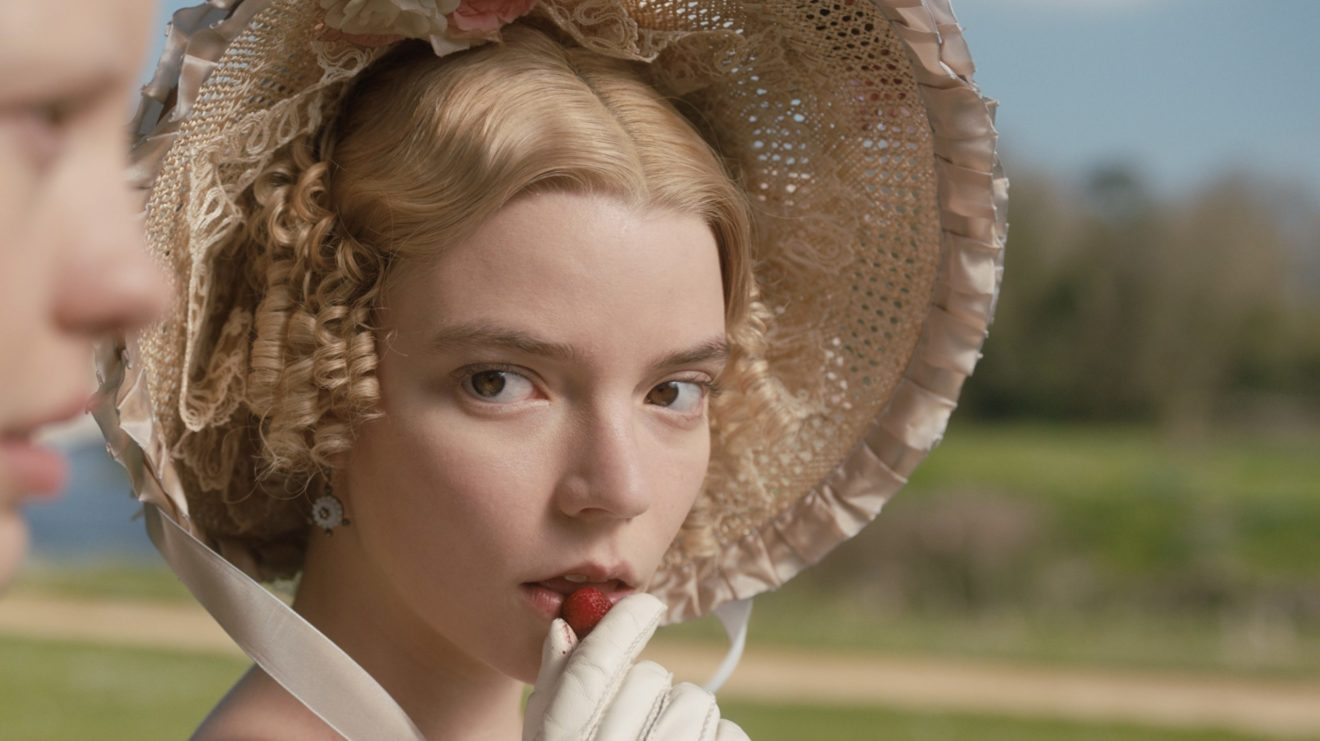
I am going to take a heroine whom no one but myself will much like.
Jane Austen
Emma, the so-called “delicious” new film version of Jane Austen’s late-career novel, screened theatrically in Los Angeles on Saturday, February 22 to a lively full house at the Landmark Theater where it was followed by a savvy Q&A moderated by beloved independent filmmaker Gus Van Sant. Olivia de Wilde (think Oscar Wilde, style of dress and wit included), the film’s director, and Christopher Blauvelt, its cinematographer, talked to Gus Van Sant and also fielded questions from the audience. The discussion that follows highlights how Olivia de Wilde, in her first feature film, drew from her background in photography, music, and acting as well as considerable research in the history of etiquette and fashion design to deliver an Emma that thrives on impeccable physical acting, authentically elaborate costumes and sets, and a “heightened” use of color and light while never dumbing down the literary quality of the dialogue. This is a delightful, high-energy Emma, with a vivacious filmmaker to tell how she brought it to life.
Gus Van Sant This is the second time I’ve seen your film, and it’s such an amazing piece. I’m very surprised and inspired. There are so many intricate little things that are so clear and beautiful and touching, and it makes me see Jane Austen for the first time. So, how did you do that? Well, how did the project start—because I think I heard that somebody suggested that you sort of throw your hat in the ring?
Olivia de Wilde Yea—I like dropped my phone when I heard. I was invited to pitch after a conversation or two, and then I had about a month to prepare, so I went down this deep rabbit hole. I’ve always been obsessed with etiquette history in general, and with that time period in general. And then I went deep into the book. And then I sort of realized how funny Jane Austen was. It’s kind of like Shakespeare—it requires a translation of old words and understanding the meaning of a joke, and I really gave myself the time to unlock that, and then I felt like I wanted to bring that out.
And then I’m obsessed with screwball comedy, like Bringing Up Baby and His Girl Friday, and I thought it would be interesting to bring an American comedy style into the film, because there are so many layers of passive-aggressive behavior. You know, you go to a party where everyone hates each other, and I find that endlessly fascinating—what people say out loud, and then what it’s so clear they’re thinking.
GVS In life? And in screwball comedy, and in Jane Austen.
ODW Exactly. And screwball comedy, because of that time period, has a formality, which makes Katherine Hepburn wilder, because everyone else is so uptight. That makes it funny, because she’s wild. Since I knew Emma had to go through this transformation, I wanted this transformation to be like springs are popping out of the clock.
GVS Or her curls are getting looser?
ODW Yes. There’s literally a curls story going on—for real. I know it sounds like a joke, but I’m really obsessive about stuff like that. And clothes—sometimes she’s wearing a collar that makes her seem like a dragon lady. There was a lot of design in telling you how bad Emma was being in that moment. And then sometimes the design was to show you her immaturity, and the curls are kind of up front, and she’s like a little girl who can never do wrong.
A lot of the details came from not only fashion illustrations but pretty weird blogs—the cool thing about Jane Austen is that so many people love her that there are endless blogs focusing on about two seconds of the book, so I went deep into all those theories and pulled out the ones I liked.
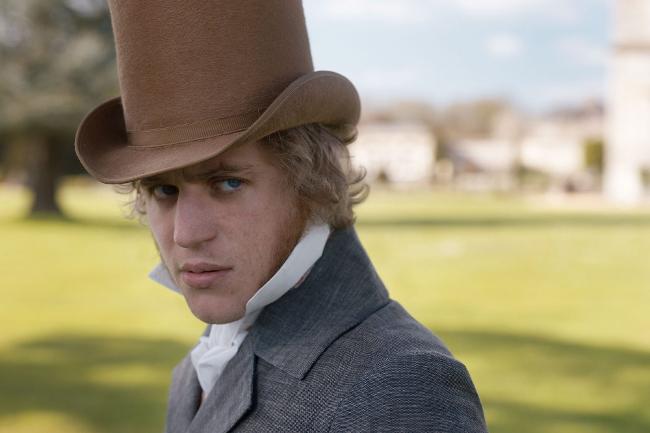
GVS Who’s writing the blogs?
ODW This is the thing—once I had a researcher, an expert, I had to say, ‘Is this just some random dude who said this, or is this fact?’ Sometimes we just don’t know. There’s a lot of mystery surrounding her...
GVS It’s conspiracy theories.
ODW Yea, conspiracy theories. Yea, they think her doctor killed her. By accident. Arsenic was like—it makes wallpaper pretty, and it kills rats, and it might make you feel better.
GVS Like the comedy of manners in the book, Emma. So when you were deciphering it, was it something that you’d already read when you were younger?
ODW Yea, but I don’t think I really got—because she’s so great at romance—I think that whole thing about Mr. Knightley and Emma is like When Harry Met Sally or Moonlighting, or whatever. You can really gravitate toward the love story and kind of skip the other stuff.
GVS The good stuff.
ODW Yea, the good stuff.
GVS So the good stuff, when you’re deciphering Jane Austen, with the help of the blogs and the researchers and your own research, you’re writing notes on every page—
ODW There were a lot of caricatures. I realized that some of the jokes were only understood through understanding the language and understanding the rules of the time period, so I started looking at a lot of cartoonists’ work of that era because they were poking fun at those people, too, in a really exaggerated and colorful way. I actually got a lot of ideas, like her warming her butt by the fire and all that, from illustrations of the cartoonists that were like, ‘Isn’t fashion now ridiculous?’ or ‘Look at these crazy ladies’—poking fun at the rich. I think she was, too. She was really a great satirist of small-town life, which is why I think we can identify those characters at the office, or in a small town, or in a high school.
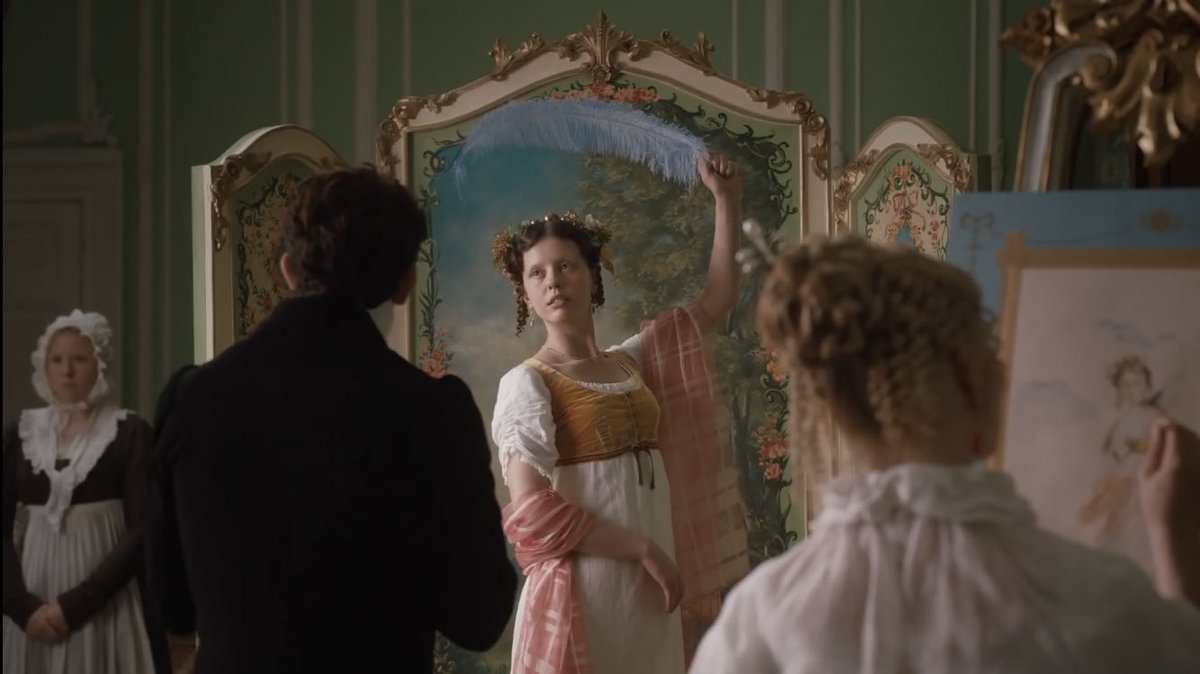
GVS So, wait—when you understand, say, the certain bits of comedy of manners—moments—then applying them with acting is very hard, and I also heard that you went to drama school.
ODW I did, which is something I kept secret in my early rock-photography days—it was like, if they found out I was a drama nerd, I was screwed. And then it became one of the most essential tools. I had learned all the discipline of acting.
GVS What was the school?
ODW It was just LACC (Los Angeles City College) Theatre Academy, but it was a three-year program, and, well I couldn’t afford to go to college, and there was a really hot guy who went there, so that was it for me.
GVS So were you able to bring that back in—were you acting yourself, back then?
ODW You mean in photography? Well I was, yea, I wanted to be an actor. I looked a lot more like Olive Oil back then, and Miranda Hart—she’s six-foot-two as well. My whole goal was like a Shelley Duvall kind of direction, you know—like physical comedy. I wanted to be the “stork” Peter Sellers. But I didn’t love the life of auditioning. I was pretty comfortable with rejection, because I was six-feet-two and I knew nobody wrote the part for me, but I felt this sadness, before I went in, around the actors, and I was hanging out with bands that were my friends, and they just felt more like my world. So I abandoned acting, and I had a reason to be there (with the bands) because I took photos.
GVS You were talking about something that applies to this film, but it was about your kiss in the Denny’s parking lot, which was descriptive of certain parts of this movie, of how the characters are feeling—can you tell us about that?
ODW Yea—I wanted the rooms in the film to be transformed by the behavior, as is the case, I think, in real life. You know, the room feels like this most comforting place on earth with her father, and it becomes sensual—like when the screen comes in front of them. The day we choreographed that, I went up to Chris and was like, ‘Is this gonna work? It’s really stupid!’ because this wasn’t my idea. Eleanor Catton, the screenwriter, is a genius, but I was like, ‘Oh my god, this wasn’t my idea!’. And with Harriet and Emma, that sensual friendship of your first best friend—there is a true love, especially if it’s before you’ve ever kissed anyone—I think it can be one of the greatest loves of your life, that first soulmate best friend. So Harriet’s bedroom transforms with the tragedy of their ‘break-up’.
So the story you’re asking about is that—there was this guy. We hadn’t kissed yet, and I really liked him. We were in Little Rock’n Old Denny’s—at the time, that’s what it was called. It’s not there anymore. It was near Guitar Center and it was in this really crappy parking lot. It smelled bad. There was a homeless guy who looked a bit aggressive over there. And I was—I knew it was coming, and I wanted to kiss him, and like this was the worst place. And then—we kissed! And I was like, ‘This—this parking lot is incredible! I remember noticing the graphic lines in the parking lot—like, that pattern is ingenious! I’d never seen it before! And those guys were singing a song just for us. And I’d never noticed that those lights were amber-colored... I thought a lot about that moment, and Los Angeles is so much like that. Someone says, ‘I hate L.A.’ and then something really sexy happens and they’re like, ‘I love this city!’ So that’s the story.
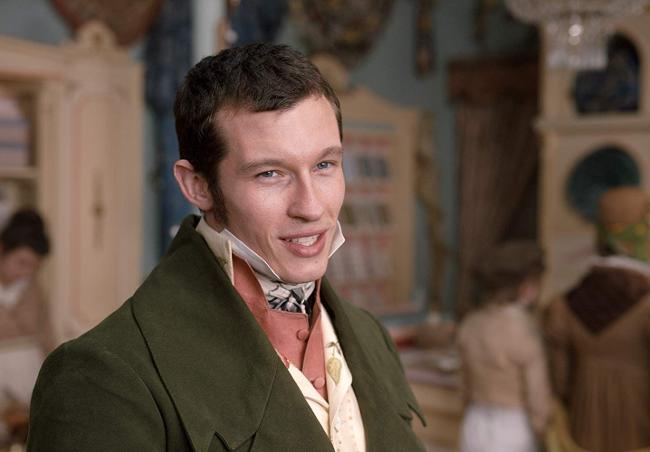
GVS Well I should also ask Chris a visual question about all the colors.
Chris Blauvelt Yea, we embraced it, showing the colors the way we did. We had a lot of research to look at—all the departments, you know—wardrobe and production designer—we would sit in rooms and look at swatches and colors and really embrace that era, and also the idea that it was new to them. A lot of times dated movies are antiques, and they look older, but in real life, if you’re living in that age, then everything looks much newer, so that became part of our look.
ODW Color was how people showed their wealth, so the wallpaper and the colors are accurate for the time period. We did a heightened style, but the way Chris lit it—you know you have to be careful when you’re working with color like that because if you light it and you’re telling someone it’s fake, no matter how beautiful they make the set, or how realistic they make the set, if you screw up the lighting, then it can all look like a Disneyland ride, which is not a bad thing—I may do that someday, I mean I loved it, but that’s another story...
GVS: Audience questions?
Audience How did you move from music photography to movies?
ODW So he asked how I made the jump—the difference between shooting musicians and eventually making a film. It does seem like a big leap, but I don’t like being photographed so much, so I probably gravitated toward musicians just because I wanted to help them. It was a time in indie rock when it was a pop-stars-only type of world, and it felt underground at the time in indie rock, and I wanted them to be noticed.
So I was using acting techniques (but I didn’t want to admit it to them) to help give them a character to hide behind. With most of the photos, I started pretending they were scenes from movies. Most of my inspiration for photos of band musicians came from movies. My Own Private Idaho I referenced a lot, actually. The reckless vulnerability of the two main characters. Those kinds of movies were so rock ’n’ roll in the way I felt, so a lot of times, I think by getting a musician in a movie or a couple of movies or asking them about a movie, and then saying, ‘Let’s just pretend we’re in that movie’, without the set dressing or anything, then they’re playing ‘pretend’ and that’s play, and play is attractive, and play is more fun. So I suppose over the years I was ‘making’ all these little movies that never got made, and I do think that process helped me with actors, eventually. It was still a big leap, but it was a stepping stone.
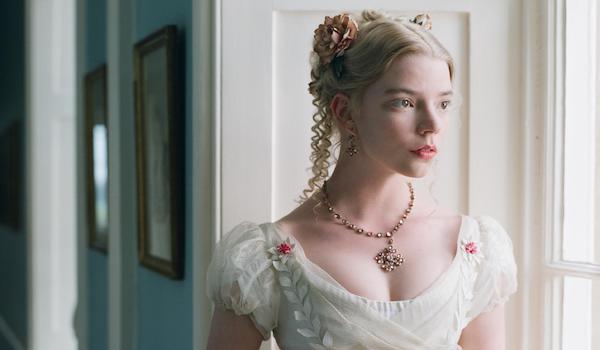
GVS This is your first film, but were there other films that you got close to making?
ODW There was one. I was going to make a teen movie, and Chris and I were ten days away from shooting it, and the financing fell through. It was super heartbreaking. And then I realized that I wasn’t put off at all—I was so hooked, it hadn’t discouraged me at all, even though it took a long time to get over that, but it actually told me that for sure, I wanted to do it.
CB It wasn’t a loss of time. We prepped—we were almost shooting, so we got through all that prep and shot a scene, so it was a bit more knowledge...
ODW It’s true—in a way, I got to practice doing the prep. I mean any time I’ve have a huge disappointment, I always try to collect what I’ve learned. Otherwise, I would have just crumbled a long time ago. Because we were so close to making the movie, I think that prep was an invaluable experience before we made this film.
GVS How long ago was that?
ODW It feels like two years, but when we started making this movie, it was a year and a half, so it might be five years or something.
Audience I was glad to see a hangnail in the close-up of her hand...
ODW Yea, there was no make-up (except some basic stuff). I wanted to feel the perfection from the handiwork of the maid who had put her together, or the girls, if they had to do their own. I didn’t want it to feel like a Hollywood movie. The things women did to get ready were incredible enough, so all that we did was tiny little things that were not vanity—just a little more color for the autumnal scenes, stuff like that. I stayed away from the perfection of the female body, especially, because that bothers me a lot.
Audience Why was it important to film Emma now?
ODW I think that we’ve all had an Emma in our lives. Probably most of us think we’re Harriet, but late at night, if you really think about it, you’ve been an Emma, too. She’s an iconic character because it’s something that we can’t quite resolve. This movie is a romantic fantasy, but it’s also a father fantasy, and also a friendship fantasy, where that girl that’s such a jerk to you, but you love her so much, has this crazy epiphany and changes. I hope that happens in your life, but I don’t know if it happens that often, so I want to go to a movie and have that escape.
It’s also not demonizing. The closer you get to people—they’re the only ones that can really hurt you—if they have the potential to be your greatest love.
Audience For a period piece like this, usually it’s all about the women’s clothes, but this film was so amazing with the men’s costumes, particularly Bill Nighy’s.
ODW He demands a lot of fashion attention, and I’m not sure he would have agreed to it if he didn’t know that I knew that. When he came in for his first meeting with Alexandra Byrne, he was like, ‘No britches’ (as in the short pants). She said, ‘You’re very lucky, because at right about 1815, the trousers were coming in.
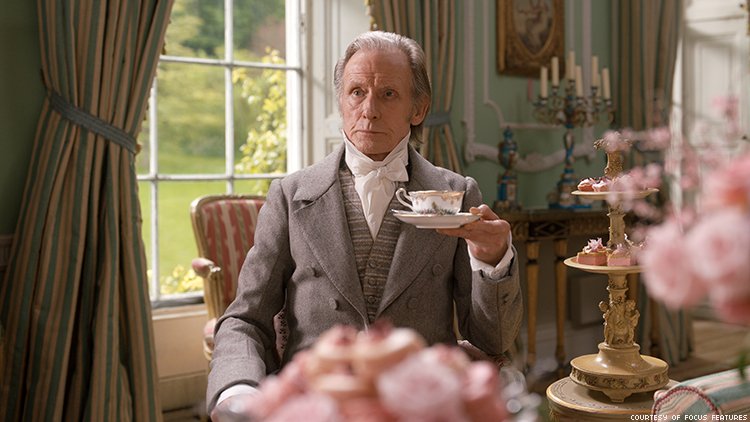
Audience So that was accurate to the time?
ODW Yea. Again, in doing a lot of research. Well, there have been movies where they go into the fashions of that time with britches, so I don’t want to say no one’s ever done it, but when you look at the fashion illustrations, there are plaids mixed with floral patterns, and the men had color in their clothing, and that was really important to me. It’s possible that in movies in the past, they would have been, ‘Whoa, hold on, that’s a little too girly—let’s just back off that’, but that stuff was definitely not my concern.
Also, it might seem like Mr. Knightley is undressing just for the thrill, but I felt like I’d never seen a movie where I saw all the—we’ve been watching women, oh it’s this piece, and then the corset—I just hadn’t seen the whole thing. And then when Alexandra Byrne explained to me—and I asked her to show me exactly the whole dressing process for men—and I realized that men and women both wore dresses underneath their clothes and stockings over their knees, I thought that was really important to show the similarity. There’s all this crap every generation about ‘this is manly’ and ‘that’s feminine’. When you go through fashion history, it’s like, ‘What?’ It’s all ridiculous. I really wanted to show that what someone might call feminine now was what made a man back then, and I thought that was really interesting, and he’s really pretty....
CB Also, in real life, though. Has anybody seen Bill in real life? He’s perfect. He has the best style—you just want to be in there.
ODW Yea, going back to Bill—Bill Nighy inspires a lot of fashion.
Audience I thought that certain scenes in the locations you chose were wonderful. Did any films inspire them?
ODW Yea, actually, A Room with a View. The pond scene is one of the most beautiful uses of male nudity because it’s not like, ‘Ha ha! Look, they’re naked’. A lot of times it’s like, ‘Ha! We’re seeing their butt!’. I guess it’s fine sometimes, but in A Room with a View it just felt like this private view into these men doing something that they could only do with each other because of that time period. But it also just reminded me of—because I was like one of the guys—I’ve had some experiences on the road with bands where something like that happened, but it wasn’t like, ‘Look at me, I’m naked’ or ‘Don’t you think I’m hot?’. It’s this total abandonment of self-consciousness. So that was a big inspiration for me, that scene.
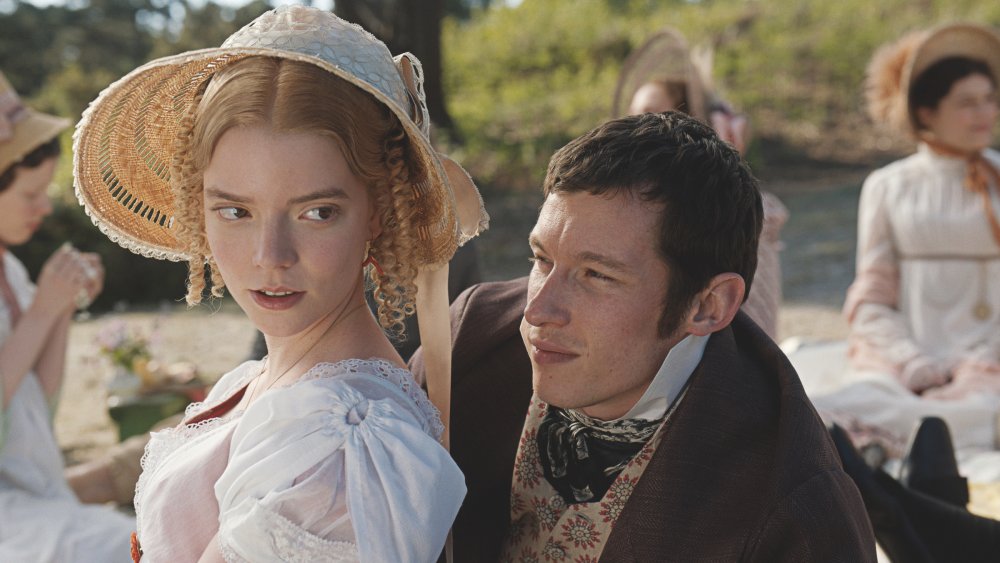
Audience In making Emma, were you ever thinking about giving the women something else to do besides falling in love, being in a relationship?
ODW Well, it’s an iconic story, so people can endlessly interpret what their Emma is, and I’m only going to speak about what my Emma became, and what I realized is that she’s not really a matchmaker. She’s not a yenta. She really only matches two people.
And she’s committed to taking care of her aging father; that is what she’s going to do for the rest of her life, so her matching Miss Taylor, her governess, is matching to someone who’s maximum five miles away, so she’ll never lose her. She’ll lose her in the house, but she won’t lose her.
And then she picks a friend like she’d pick a new puppy, but she’s never had any practice, having a friend. Girls of her stature were educated alone with a governess. She didn’t go to school with a bunch of girls around her and find a natural other. So, what practice has she had? I think what she realizes quickly is that this person is definitely not disposable, and she desperately wants to figure out how to keep her captive in her dollhouse, so it’s matching her to the vicar, who would probably visit every day because they’re one of the wealthiest families in town.
So to me it’s more of a young girl who’s trying to manipulate a situation to keep these little dolls that she wants to collect, and she just doesn’t know the repercussions of playing with people’s lives yet. And she’s extraordinarily intelligent, and I think maybe we’ve all known someone who’s so intelligent that you give them a lot more credit than maybe they’re ready for because they’re so immature emotionally. Everyone develops these muscles at different times, and sometimes they’re really out of whack, and that kind of person can hurt a lot because they seem like they should be smarter than that.
Audience How do you think your Emma compares to earlier Emma films?
ODW I tried not to think about that. I wasn’t trying to make the ultimate Emma, because I think that’s a mistake. I love classic stories. They’re classics because you can relate them to things in your life, to experiences you’ve had, no matter how much time has passed. For me, I just tried to create it from the heart, the relationships and the things in it that I saw that related to memories I had and maybe the tales that were building in my head and my obsession with Jane Austen, which was growing.
But one thing that was important to me was to not dumb down the language out of fear of it not being understood. I was using a lot of physical comedy and the actors were doing a lot of work. A lot of this movie is like a ballet, where you might think there’s talking, but there isn’t. So I thought, for the Jane Austen fans, they know what’s being said, and for someone who’s not catching every word or not sure of every name, they’re getting a lot of distinctive character differences, and wants, and obsessive needs, and other stuff from the non-speaking moments.
Audience One thing we don’t see a lot in other period films is the inclusion of the servants and the help, and I know it makes for great comedy just to see their reactions to everything that’s happening, but I think it also gives us a little bit of discomfort, because we’re also being reminded that these are rich people’s problems that they’re dealing with. What are your thoughts on dealing with these characters that are so easily pushed into the background?
ODW It was something that Eleanor Catton and I discussed a lot, because Jane Austen only wrote about things she knew. So, for example, she never wrote about the war, and she didn’t really write much about men speaking privately, and she didn’t know, really intimately, the lives of servants, so these are all barriers. So they’re not mentioned a lot, and I really gravitated toward this one part of Emma where it was said that Mr. Wodehouse preferred this one servant because she closed the door more quietly than the others.
You know, I grew up in L.A., on the East Side, and we didn’t have very much money, and the first time I went to Beverly Hills to a really fancy home, their family was having their little tiffs and annoyances, and there were maids there, and they pretended the maids weren’t there, and the maids pretended that there wasn’t a fight going on, and it was so unfamiliar to me that I thought it was ridiculous. You know—not just in the judgement, but that’s how that person was raised.
Eleanor Catton and I talked a lot about the lack of privacy in their lives, which is the case with a lot of wealthy people. I’ve noticed that there are people everywhere to manage this giant house. So I thought it might be interesting to use them to help us know where the privacy was, and when the private moments were.
And also, rather than going inside the servant’s life, it was interesting to just start to sense how the servant felt about something, but not go any further than that. And I thought it might be funny to just have this—the more you watch the movie, you could elaborate, maybe, on what Bartholomew and Charles are thinking about. We had a lot of backstory, like Bartholomew is really into pleasing Mr. Wodehouse, like ‘this is my life’. And Charles is a little bit like, ‘Okay, buddy, just back off’.
But also, I had this image of Emma’s life as one of those cuckoo clocks, so the servants almost never walked in straight lines, so that everyone was always circling and taking the long way around, so they also served a visual purpose, to show the perfection of Emma and her father, how their day was run, and that way, when things start going nuts, like she starts feeling the passion, everyone’s a hot mess, and everything starts kind of like stuttering, and so they were there for a visual metaphor as well.
Emma
Director: Autumn de Wilde; Producers: Tim Bevan, Eric Fellner, Graham Broadbent, Pete Czernin; Screenplay: Eleanor Catton, based on the novel by Jane Austen; Cinematographer: Christopher Blauvelt; Editor: Nick Emerson; Sound: Ben Barker; Music: Isobel Waller-Bridge, David Schweitzer; Set Decorator: Stella Fox; Costume Designer: Alexandra Byrne; Production Designer: Kave Quinn; Art Director: Alice Sutton.
Cast: Anya Taylor-Joy, Johnny Flynn, Mia Goth, Bill Nighy, Miranda Hart, Josh O’Connor, Amber Anderson, Callum Turner, Tanya Reynolds.
Color, DCP, 129 min., in English.